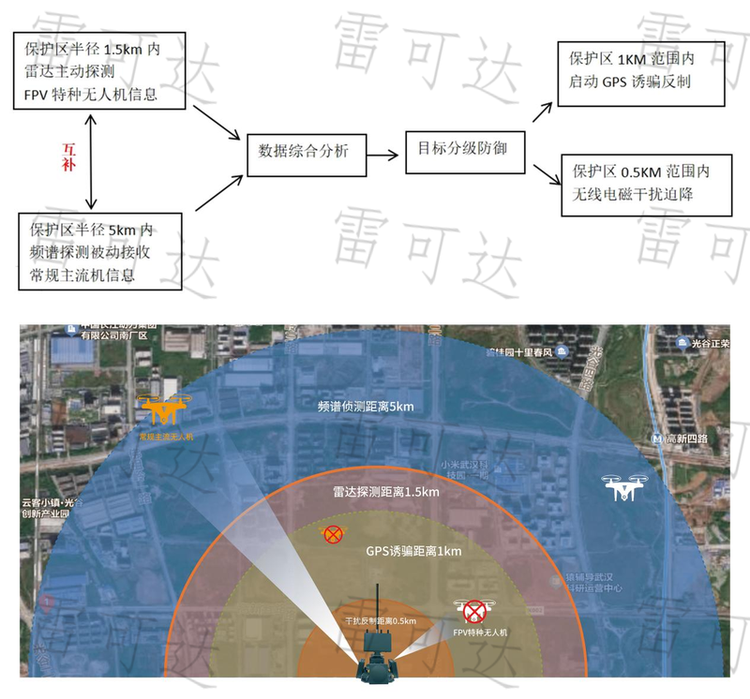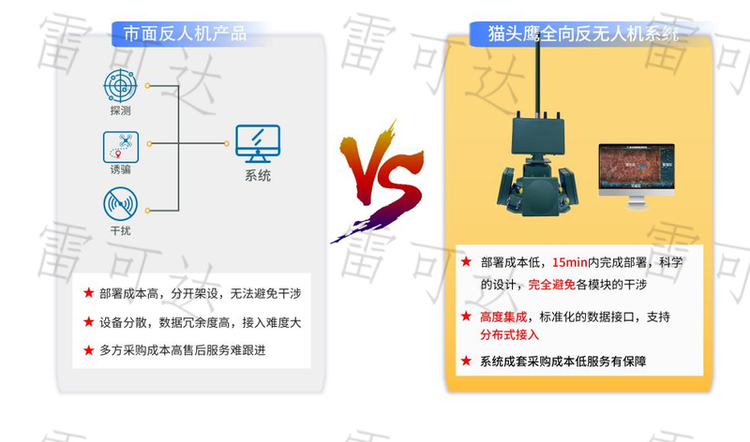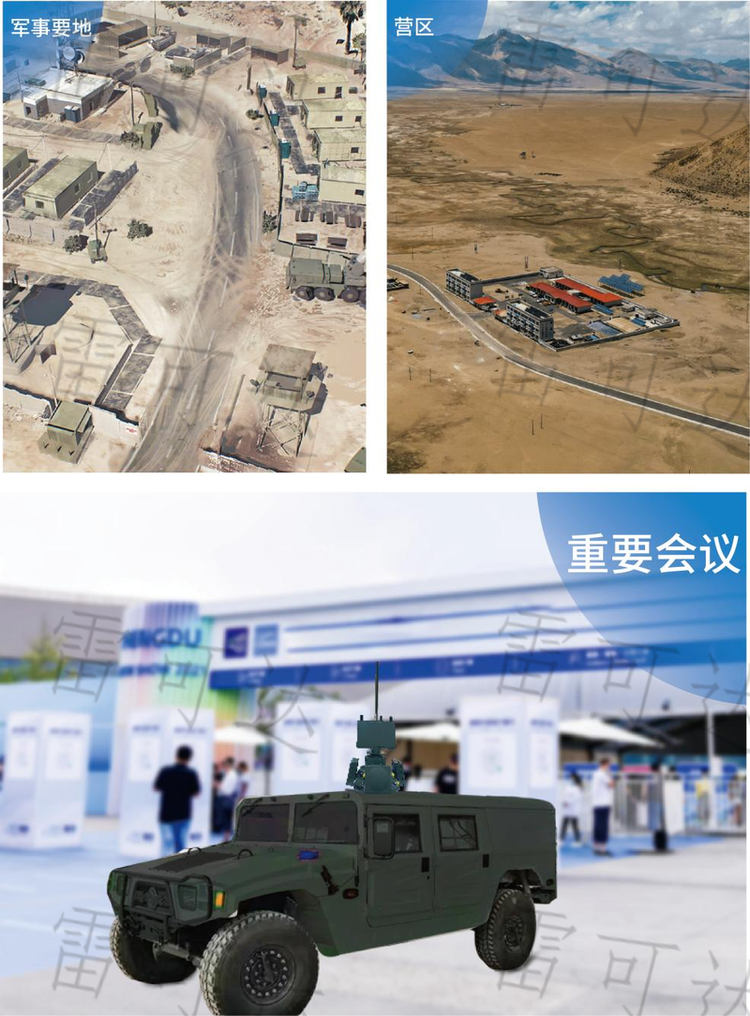In recent years, drone technology has been widely applied in various fields such as logistics and delivery, transportation, emergency rescue, agricultural plant protection, and surveying and exploration, achieving a comprehensive expansion from consumer-grade to industrial-grade markets. With the continuous enrichment of “low-altitude economy+” application scenarios, the deep integration of drones with various industries has also brought about security risks such as privacy invasion, illegal intrusion, and terrorist attacks. To address these challenges, counter-drone technology has rapidly developed and gradually become an important component of modern security systems.
Wuhan Lakeda Technology Co., Ltd. has independently developed a highly integrated product—the Owl Omni-Directional Counter-Drone System. This system combines multiple technologies, including radar and spectrum detection, GPS spoofing, wireless electromagnetic interference, data analysis, and automatic countermeasures, enabling comprehensive monitoring, precise identification, and efficient handling of drones.
The system is specifically designed to prevent drones from carrying hazardous materials into key areas or illegally photographing surveillance facilities. By detecting, interfering with, and redirecting drones within the protected area, the system effectively prevents them from entering core protected zones, significantly enhancing security protection capabilities.
1. System Introduction
1.1 Design Structure
The Owl Counter-Drone System consists of front-end hardware devices and back-end application software. Leveraging standardized data interfaces, users can monitor device operational status in real time via the software, ensuring an efficient and convenient management experience.

1.2 Working Principle
The system employs a collaborative detection mechanism combining radar and spectrum technologies: the radar system primarily targets special drones such as FPV drones, while spectrum detection covers conventional models, enabling comprehensive and multi-type drone identification. Real-time situational data is transmitted back to the application software, where the system automatically activates navigation spoofing and electromagnetic interference modules based on preset strategies to achieve efficient countermeasures.

Centered around active detection units, the system can detect all flying targets and implement intelligent tiered prevention and control through navigation spoofing and electromagnetic interference. For intruding targets within a 1-kilometer range, the system automatically initiates countermeasures until they leave the protected area, ensuring the security of core zones.
2. Core Advantages of the System
Most counter-drone systems on the market suffer from issues such as dispersed equipment and low integration, often accompanied by complexities in debugging and low collaborative efficiency.

The Owl System highly integrates radar and spectrum detection, GPS spoofing, and electromagnetic interference functions, adopting a modular and integrated design to achieve multi-dimensional data fusion analysis. It not only significantly improves target identification accuracy but also offers the advantage of rapid deployment—requiring no complex construction, it can be installed and debugged within 15 minutes, greatly enhancing operational efficiency.

3. Application Scenarios
The Owl Omni-Directional Counter-Drone System focuses on protecting core areas and is suitable for various scenarios such as key point defense, military camps, critical infrastructure, and security for major events. Relying on a radar-centric detection system and an intelligent tiered countermeasure mechanism, the system can automatically handle targets within a 1-kilometer range, ensuring comprehensive security for sensitive areas.

In 2024, Wuhan Lakeda Technology not only launched portable radar system solutions for the military and police markets but also introduced two series of counter-drone systems, “Owl” and “Haidongqing,” for the low-altitude security sector. Additionally, the company launched the “Lei Dun” smart fishery farming security system for the marine fishing industry, continuously expanding its range of industry applications.
In the future, Lakeda Technology will continue to deepen its expertise in military and civilian radar applications, focusing on real industry needs and addressing practical pain points. Upholding the corporate mission of “Lakeda · Securing the World,” the company aims to provide leading radar technology and exceptional outdoor security solutions to global users, safeguarding lives and property.
Further Reading
- Federal Aviation Administration (FAA)—Drone System Integration and Airspace Management
- International Civil Aviation Organization (ICAO)—Unmanned Aircraft Systems (UAS) Regulatory Framework
- IEEE—Research Papers on Counter-Drone System Technologies
- UK Civil Aviation Authority (CAA)—Drone Safety and Regulations Guide
- DJI Innovation—Drone Safety Flight and Technology White Paper